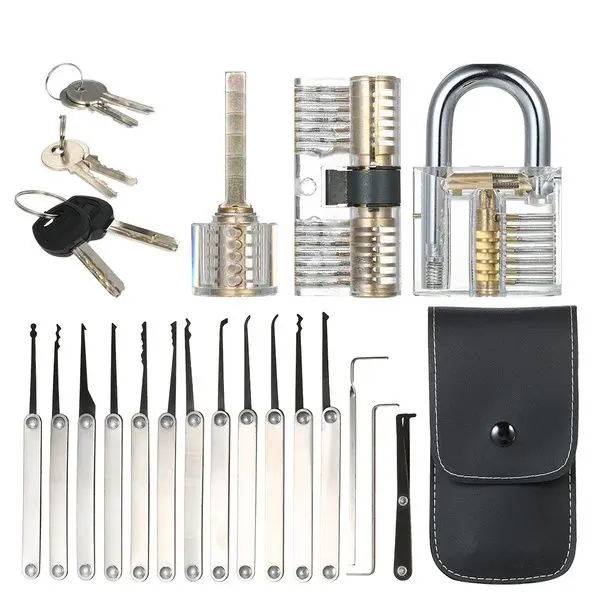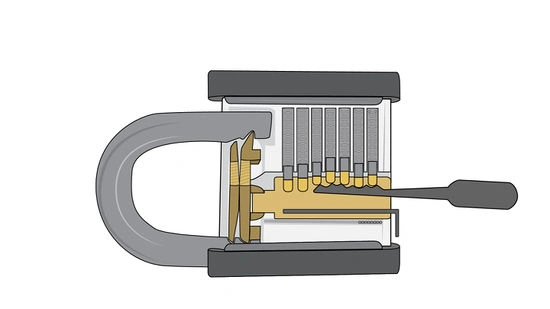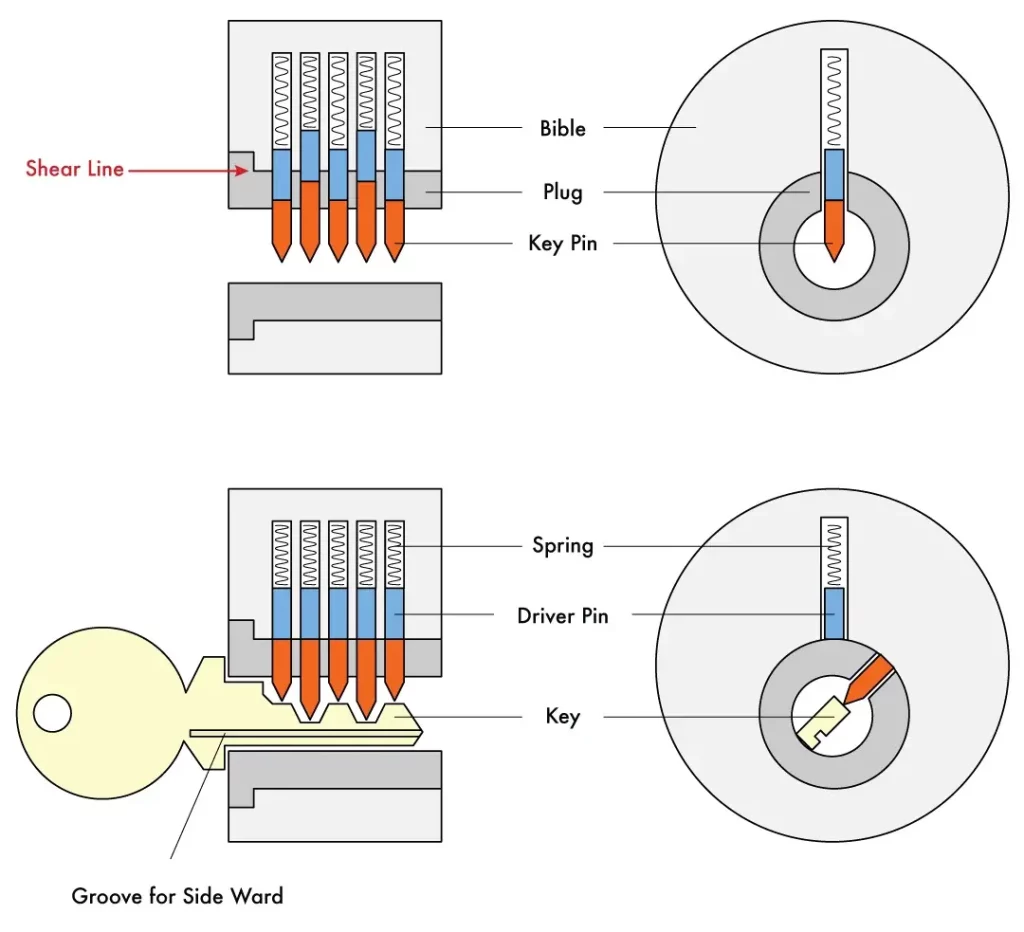A Step-by-Step Guide on How to Open a Lock
Opening locks is often a part of our daily life, at home, in the office, or elsewhere, where places are kept under lock and key for security. Though this very concept of locks is meant to save our belongings, sometimes this may become a problem when the key is misplaced or lost. This is why learning the art of opening locks can be very useful at such times. However, great care must be taken to ensure that any knowledge extracted from here is utilized responsibly and ethically and never for some nefarious or criminal purpose.
In the guide, I will take you through the step-by-step process of safely and effectively Open a Lock. We will examine what tools and techniques are involved in taking precautions for the successful operation of a lock. Whether you work in the locksmith professional sphere or wish to gain relevant knowledge, this guide will endow you with the necessary insights into this thorny world of lock opening.
Table of Contents
Tools needed for Open a Lock
Before delving into the details of lock opening, we should familiarize ourselves with the tools used. The standard tools include:
- Lock Pick Set: Most standard lock pick sets include picks, tension wrenches, and other more specialized tools for manipulating locks.
- Rake Pick: A rake pick is any lock pick that resembles a rake and has several ridges or peaks on the shaft. It is used to quickly set a lock’s pin tumblers.
- Hook Pick: A hook pick is a long, thin, curved tool used to leverage individual pin tumblers in a lock.
- Tension Wrench: A tension wrench is a flat tool that applies rotational tension to the cylinder while picking the lock.
- Lube: A lubricant can reduce friction and permit smoother pick motions inside the lock.

It is important to note that possessing and utilizing lock-picking tools may be subject to specific regulations in some jurisdictions; thus, it is crucial to take an interest in the laws and regulations relevant to your area.
Step 1: Assess the lock
The type of lock you’re dealing with should first be identified before attempting its opening. Different locks work best with other techniques and tools. Some common types are:
- Pin and Tumbler Locks
- Wafer Locks
- Disc Detainer Locks
- Lever Locks
- Combination Locks

Identifying the lock type will give you the appropriate method and tools to open the lock.
Step 2: Choose the appropriate method
Along with the type of lock, one can already determine what method to use to open it. Each type has various techniques that can be used; each has its advantages and problems. The following are some of the standard methods:
- Lock Picking
- Raking
- Impressioning
- Decoding
- Bypass Methods

The method will depend on several factors, including, but not limited to, skills, lock complexity, and the availability of tools.
Step 3: Gather the necessary tools
Prepare the tools you will use based on lock type and chosen method. Prepare appropriate lock picks, tension wrenches, and other specialized tools that a given lock and technique might need.
Step 4: Insert the tool into the lock
Carefully insert the selected tool into the lock’s keyway. This step requires gentleness and patience so as not to damage the lock or the tools. If a tension wrench is used, light rotational tension on the cylinder is applied.

Step 5: Apply tension
Manipulate the pick or rake within the lock while maintaining the appropriate tension on the cylinder. The tension required may vary depending on the lock type and method.
Step 6: Feel for binding pins
As you manipulate the pick or rake, be sensitive to the lock’s feedback. Be aware of binding pins or wafers—the points where the key pins or wafers must be set.

Step 7: Set the pins
Using the appropriate method—lifting or raking—position, the pins or wafers are positioned into their correct sets. It may take several attempts to readjust the tension and manipulate the pick.
Step 8: Repeat the process for all pins
Continue feeling for binding pins and setting them until all pins or wafers are correct. This step may require patience and persistence, as some locks can be more challenging.

Step 9: Test the lock
Apply light rotational tension on the cylinder after setting all the pins or wafers. If it opens, congratulations! You just opened the lock. Repeat the steps until you get the desired result if you need to.
Additional tips and tricks for lock opening
While the above steps provided a general framework for lock opening, there are several additional tips and tricks further to increase one’s success rate in lock opening:
- Practice on Training Locks: This is pointed out last, but it really should be done long before trying to open an absolute lock. Do this with training locks or lock-picking practice sets, specialized tools developed for practice in a controlled environment without risking damage to actual locks.
- Lubricate the Lock: Apply a little lubricant to the lock’s keyway. This will reduce friction and, therefore, make the pick movements much easier. Just be aware that over-lubrication can make things much more challenging.
- Variable Tension and Pick Manipulation: Sometimes, one lock is more responsive to one tension setting and/or pick movement than another. Try changing the tension setting and/or the movement of the pick to affect the lock you are working with.
- Listen and feel for feedback: One of the more critical aspects of lock-opening skills is developing a keen sense of touch and hearing. Pay attention to the subtle feedback that the lock conveys- the sound of the pins setting or the resistance that may be felt with the pick manipulation.
- Remain patient and persistent: Opening locks can be painful and take a lot of time, especially when the locks are complicated. Keep cool and patient, persist, and do not stop trying after the first, second, or third failure.
If you encounter any difficulties, such as a difficult lock or a specific technique that requires an explanation, take your time and consider consulting a professional locksmith or a community that specializes in lock-picking. Such resources can be of great help, giving novices insights and tips on how to navigate this complicated world of opening locks step by step.
Also Read: How to Set Up a VPN for Secure Online Connections
Frequently Asked Questions
Q: Is lock picking legal?
A: The legality of lock picking depends on where you are and why you plan to use it. It is considered legal to pick locks you own or have permission to gain access to, but it’s illegal to pick locks without authorization. It is worth spending some time reviewing the pertinent laws in your region.
Q: Does lock picking damaged locks?
A: If done correctly and with the right tools, the lock should not be damaged. Poor techniques or incorrect tools may damage the lock’s mechanism.
Q: Is lock-picking hard to learn?
A: Lock picking requires patience, practice, and an understanding of how locks work. The beginning stages may be difficult, but with proper guidance and dedication, anyone can quickly learn the basics of lock picking.
Q: Are all locks pickable?
A: Many locks can be picked using various techniques, although a few high-security locks and specialized locking mechanisms provide better resistance against picking. Factors such as the lock’s complication and the selector’s expert level are vital in determining the eventual outcome of the process.
Conclusion
In this tutorial, we compiled the steps involved in opening a lock ethically and safely. We gathered various amounts of information, starting with the study of the required tools, determination of the lock type, and the right approach to the performance of lock opening techniques.
Remember, lock picking is an art that requires practice, patience, and deep knowledge of lock mechanisms. Knowledge like this must be responsibly approached and used only for lawful purposes, such as accessing your locks or professional locksmith services.
By learning to open locks, you will gain handy practical skills and one more reason to appreciate the fine details of lock engineering. Whether you are a professional locksmith or a mere enthusiast searching for practical, functional knowledge on lock opening, the foundation built through this guide should allow you to approach the world of lock opening confidently and ethically.







